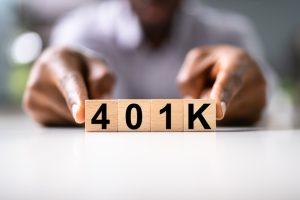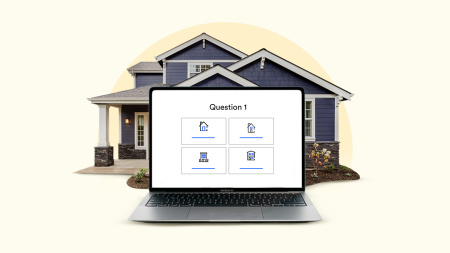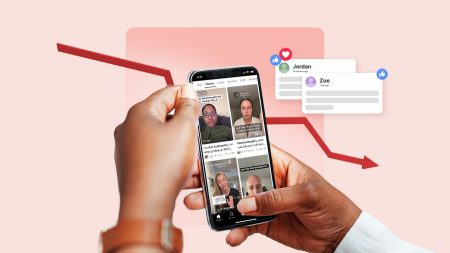Key takeaways
- While the Trump administration has suggested sweeping changes to the federal student loan program, many loan forgiveness options still exist.
- Programs that lead to forgiveness typically require monthly payments for 10 to 25 years, after which remaining balances can be wiped away.
- Make sure to stay up-to-date on pending legislation that could impact the way student loans are taken out and repaid later this year and into 2026.
Regardless of what you may have heard on the news, there are still some options to have federal student loans forgiven. These options include payment plans that result in debt being forgiven after 10 to 25 years, though taxes may ultimately be owed on forgiven amounts.
While a new Trump administration bill would change forgiveness and repayment plans in the future, this bill faces significant hurdles when it comes to passing in the Senate. Get an overview of current student loan forgiveness plans you can sign up for now, but keepin mind these options could be eliminated in the future.
What is student loan forgiveness?
Student loan forgiveness programs typically come from the government and offer borrowers a way to have their remaining student loan debt canceled. These programs are often designed for people working in specific public service sectors, such as health care, education or nonprofit work.
Rather than repaying the full amount of the loan, eligible borrowers may have part or all of their debt forgiven after meeting specific criteria, which often include making a certain number of qualifying payments or working in a designated field for a specified period.
Federal student loans are the most common type of loan eligible for forgiveness, while private loans are usually not covered by these programs. Student loan forgiveness can provide significant relief to borrowers who qualify, but it’s essential to understand the various requirements and timelines involved, as well as the potential tax implications.
Student loan forgiveness guide
Have more questions about student loan forgiveness? Get your answers in Bankrate’s guide.
Get your answers now
Forgiveness is not the same as repayment
It’s important to note that student loan forgiveness is different from repayment, but many forgiveness plans require a repayment plan throughout the process. For example, many federal student loans offer income-driven repayment plans (IDRs).
IDRs calculate the amount you owe as 10 percent to 20 percent of your discretionary income, which is the remaining income you’re left with after paying your taxes and essential expenditures, such as housing and food. It’s important to note that discretionary income varies by state and family size, so major life events, such as getting married or having a baby, can impact your monthly payment. Your payment could even be $0 if your income is low enough.
In the end, remaining debts you have after completion of these programs can be forgiven. It’s important to note that some states will count your loan forgiveness as taxable income (Arkansas, Indiana, Mississippi, North Carolina, Wisconsin). Common IDR plans include:
The uncertain future of income-based plans
Trump’s “One Big Beautiful Bill Act” (OBBBA), which is being examined in the Senate, proposes cutting down on the number of income-based options into one Repayment Assistance Plan (RAP). This would replace existing income-driven plans except Income-Based Repayment (IBR).
Student loan forgiveness options
While the new Presidential administration wants to change the way student loans are taken out and repaid over time, student loan forgiveness is not over. It’s possible tweaks to federal student loans suggested by the Trump administration will not make it through Congress, and some programs will likely remain even if they do.
Here’s a rundown of some current student loan forgiveness options other than income-driven plans and how they work.
Public Service Loan Forgiveness
Public Service Loan Forgiveness (PSLF) is one of the most well-known student loan forgiveness programs. To qualify for PSLF, borrowers must make 120 qualifying monthly payments under a qualifying repayment plan while working full time for a qualifying employer.
Eligible employers under this plan include:
- U.S.-based government organizations at any level, including the military
- Nonprofit organizations that are tax-exempt under the 501(c)(3) IRS code
- Other nonprofit organizations that provide qualifying public services, such as emergency management, public safety, law enforcement or public service law
After making the required payments, the remaining loan balance is forgiven. It’s important to note that only Direct Loans are eligible for PSLF, and the borrower must be on an income-driven repayment plan.
Head’s up if you want to work in medicine
You can qualify for PSLF if you’re a healthcare provider working with any of the above organizations for now, but if you want to go into medicine, you’ll want to keep a close eye on Trump’s bill that would prevent payments made during medical or dental residency from counting toward PSLF.
Medical school loan forgiveness
Undergraduate school can be expensive enough, but If you add medical school loans to the list, your debt could be astronomical. If you’re a doctor or other healthcare provider facing this issue, you could find relief from the following programs:
To take advantage of these plans, you’ll need to commit to working in underserved regions and areas facing a shortage of healthcare providers. Doing so may be well worth it. In addition to using your skills to help others, you could knock off as much as $120,000 in medical school debt.
Nursing school loan forgiveness
The forgiveness programs for doctors can also help forgive student debt generated from nursing school.
The Nurse Corps Loan Repayment Program is available through the Health Resources and Services Administration website. Applications are accepted annually, and if you’re approved, it could pay up to 85 percent of your nursing school debt.
Keep in mind:
The NCLRP application process is highly competitive. It’s a good idea to seek out additional debt forgiveness plans.
NCLRP eligibility
- Be a licensed registered nurse, an advanced practice registered nurse or a nurse faculty member
- Work for at least two years in a health-care facility with a critical shortage of nurses (also known as a critical shortage facility)
- Work full time during the program
Teacher loan forgiveness
Designed specifically for educators, the Teacher Loan Forgiveness program provides up to $17,500 in forgiveness for teachers in certain fields, such as special education, math or science, who work full time in low-income schools for five consecutive years. Other teachers who qualify can get only up to $5,000, which is better than nothing, but might not be worth it in terms of return on investment (ROI).
To qualify, teachers must have Federal Direct or Stafford loans and be considered “highly qualified” in their subject area. This program is a great option for teachers looking for relief, though it does not typically offer full loan forgiveness like PSLF.
Just because you say you’re a teacher doesn’t mean the Department of Education (DOE) considers you one. The DOE defines a teacher as someone involved with direct classroom teaching or classroom-type teaching in a non-classroom setting.
Keep in mind:
If you’re a tutor or non-state-certified instructor, you won’t meet the requirements to qualify for the TLF program.
Eligibility
- Have a bachelor’s degree
- Be state-certified as a teacher
- Have no waiver of certification or licensure requirements for emergency or provisional reasons
Military loan forgiveness
Members of the U.S. military may be eligible for several loan forgiveness programs. The Public Service Loan Forgiveness program is available to military members, and additional benefits are offered through programs like the Servicemembers Civil Relief Act (SCRA) and the military’s repayment assistance program, which can help service members manage their student loan debt during and after active duty.
Eligibility through active duty
You may be eligible for loan deferment, forbearance, interest suspension or cancellation while on active duty. The available debt forgiveness programs differ based on your status, circumstances and military branch. Some benefits could also be retroactive.
State-based forgiveness programs
Many states offer their own loan forgiveness programs to attract workers to specific high-need professions, such as health care, teaching and public service. Each state’s program has its own criteria and benefits, so it’s worth researching whether your state offers student loan forgiveness.
Keep in mind:
Proposals from the Trump administration want to drastically reduce the Direct Plus loan program for parents and eliminate these loans for graduate students. If this comes to fruition, borrowing options will be limited for many students in the future.
4 Additional discharge options
If you don’t qualify for traditional student loan forgiveness programs, there are other ways to have your federal student loans discharged under specific circumstances.
5 Options when you don’t qualify for forgiveness
The above loan forgiveness methods pertain to government-backed student loan programs like Direct Loans. But what happens if you don’t qualify for any of the above? Your best bet is to discharge your student debt faster through the following methods.
Bottom line
Student loan forgiveness can offer significant relief for borrowers who qualify, potentially erasing thousands of dollars in debt. Programs such as Public Service Loan Forgiveness are excellent options for borrowers in public service, education or lower-income jobs. Even if you don’t qualify for forgiveness, there are other discharge options available for specific circumstances, such as disability or school closure.
For those who don’t meet the criteria for forgiveness, taking actionable steps to pay off your student loans faster – such as refinancing, making extra payments or exploring employer repayment assistance – can help you reduce your debt burden and achieve financial freedom.
Why we ask for feedback
Your feedback helps us improve our content and services. It takes less than a minute to
complete.
Your responses are anonymous and will only be used for improving our website.
Help us improve our content
Read the full article here









